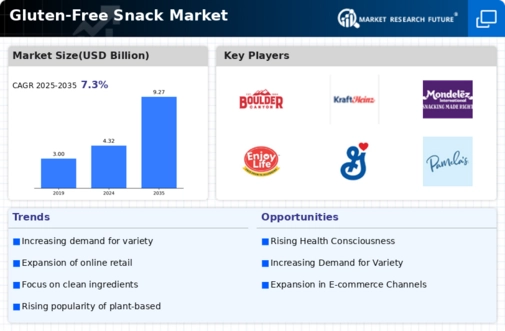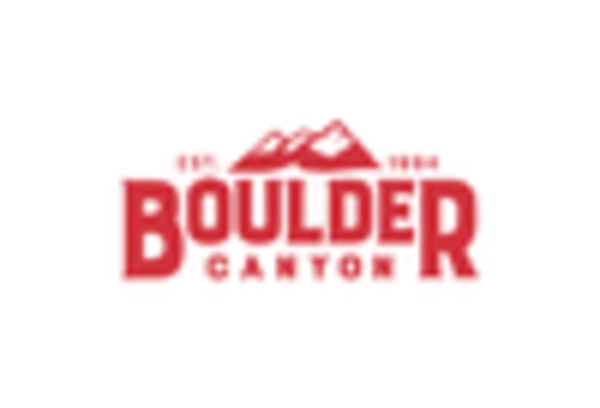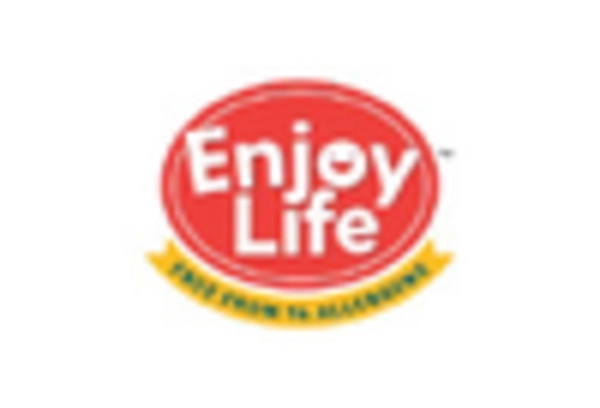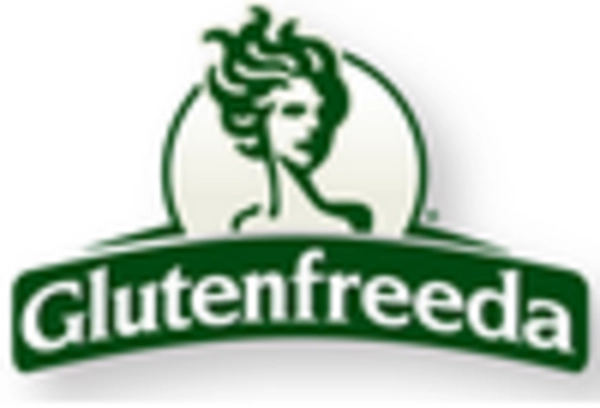Health and Wellness Trends
The overarching trend towards health and wellness is a fundamental driver of the Gluten-Free Snack Market. As consumers become more health-conscious, they are increasingly seeking snacks that align with their dietary preferences and lifestyle choices. This trend encompasses not only gluten-free options but also snacks that are low in sugar, high in protein, and rich in nutrients. The demand for healthier snack alternatives is reflected in the growing popularity of gluten-free snacks that incorporate superfoods, such as quinoa and chia seeds, which are perceived as beneficial for overall health. Market Research Future indicates that the health and wellness trend is expected to continue influencing consumer behavior, leading to sustained growth in the Gluten-Free Snack Market as brands adapt to meet these evolving preferences.
Increased Consumer Awareness
Consumer awareness regarding dietary choices and their impact on health is a significant driver in the Gluten-Free Snack Market. As information about gluten-related disorders becomes more accessible, consumers are becoming more discerning about their food choices. This heightened awareness is leading to a greater demand for transparency in ingredient sourcing and labeling. Many consumers are now actively seeking snacks that are not only gluten-free but also organic, non-GMO, and free from artificial additives. This trend is reflected in the increasing number of gluten-free products that are certified by reputable organizations, which enhances consumer trust. The Gluten-Free Snack Market is adapting to these consumer preferences by ensuring that products meet stringent quality standards, thereby fostering a loyal customer base that prioritizes health and wellness.
Innovative Product Development
Innovation plays a crucial role in shaping the Gluten-Free Snack Market. Companies are increasingly focusing on developing new and exciting gluten-free snack options to attract a broader audience. This includes the introduction of unique flavors, textures, and packaging that appeal to both gluten-sensitive individuals and the general population. The market has seen a rise in the availability of gluten-free chips, bars, and baked goods, which are often fortified with additional nutrients to enhance their health benefits. According to recent data, the gluten-free snack segment is projected to grow at a compound annual growth rate of over 8% in the coming years. This trend indicates that manufacturers are not only responding to existing demand but are also actively creating new market opportunities through innovative product development, thereby expanding the Gluten-Free Snack Market.
Expansion of E-commerce Platforms
The rise of e-commerce platforms has transformed the way consumers access gluten-free snacks, significantly impacting the Gluten-Free Snack Market. Online shopping provides consumers with a convenient way to explore a wide range of gluten-free products that may not be available in local stores. This shift towards digital retailing has been accelerated by the increasing use of smartphones and the internet, allowing consumers to easily compare products, read reviews, and make informed purchasing decisions. Recent statistics indicate that online sales of gluten-free snacks have seen a substantial increase, with many brands reporting double-digit growth in e-commerce channels. This trend suggests that the Gluten-Free Snack Market is likely to continue evolving, as companies invest in their online presence and marketing strategies to capture the growing segment of consumers who prefer shopping online.
Rising Prevalence of Gluten Sensitivity
The increasing awareness and diagnosis of gluten sensitivity and celiac disease are pivotal drivers in the Gluten-Free Snack Market. As more individuals recognize the adverse effects of gluten on their health, the demand for gluten-free products has surged. Recent estimates suggest that approximately 1 in 100 individuals worldwide are affected by celiac disease, while many more experience non-celiac gluten sensitivity. This growing consumer base is actively seeking gluten-free alternatives, thereby propelling the market forward. The Gluten-Free Snack Market is responding to this trend by expanding its product lines to cater to these health-conscious consumers, offering a variety of snacks that meet their dietary needs. Consequently, manufacturers are increasingly investing in research and development to create innovative gluten-free snacks that not only meet health requirements but also appeal to taste preferences.

















Leave a Comment